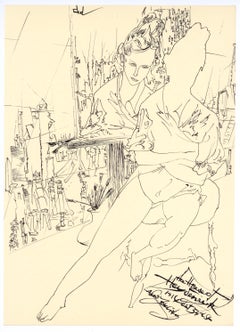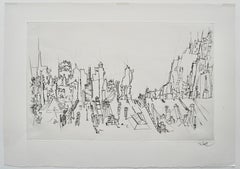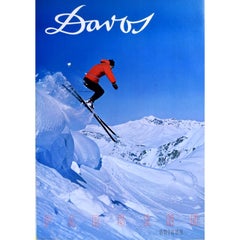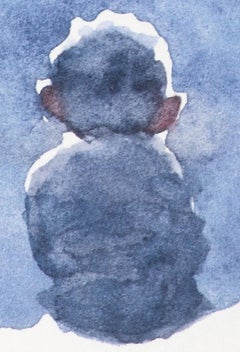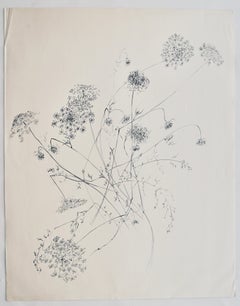Peter Takal Art
to
2
2
Overall Width
to
Overall Height
to
4
2
1
2
2
3
2
1
1
1
3
1
1
4
10,138
2,779
1,375
1,369
4
Artist: Peter Takal
original lithograph
By Peter Takal
Located in Henderson, NV
Medium: original lithograph. This lithograph was printed in 1958 for the "Improvisations" portfolio, published by the Artists Equity Association of New York on the occasion of the 19...
Category
1950s Peter Takal Art
Materials
Lithograph
Trees and Fields, Print Club of Cleveland
By Peter Takal
Located in Berlin, MD
“Trees and Fields” lithograph commissioned for the Print Club of Cleveland by Peter Takal
Peter Takal’s original lithograph “Trees and Fields” is an accomplished work of art created in 1957. This lithograph bears the stamp “The Print Club of Cleveland” on verso. This impression is signed by Takal in pencil. “Trees and Fields” is a fine example of the art created by the 20th century Romanian / German / American artist, Peter Takal.
Peter Takal: Born in Romania in 1905, Peter Takal spent most of his youth in Berlin and was mainly self-taught. His first one-man exhibition took place in the Gurlitt Gallery, Berlin, in 1932. During the following seven years his art was frequently exhibited at galleries in Berlin, Munich, Paris and as well as Casablanca and Algiers. At the beginning of the Second World War (1939), Peter Takal came to the United States for an exhibition of his art at the Katherine Kuhe Gallery, Chicago. He decided to remain in the United States and became an American citizen in 1944.
Living in New York, Peter Takal quickly established himself as a leading printmaker and a modern master of both lithography and drypoint engraving. One-man exhibitions of his art took place in New York City (1942), Chicago (1939 & 1941), Washington (1959) and Los Angeles (1966). International exhibitions of his art were held at the Galeria de Arte Mexicano, Mexico City (1959), the Palazzo Strozzi, Florence, Italy (1960) and at the Kestner-Museum in Germany (1962). Museums to date that include Peter Takal's original prints in their collections are, the Chicago Art Institute, the Library of Congress, Washington, the Los Angeles County Museum of Art, the United States State Department, UCLA, the Berlin National Museum and the Bibliotheque Nationale, Paris. Over the years, the Museum of Modern Art in New York and the Arkansas Arts Center have acquired a very extensive collection of Peter Takal's lithographs and drypoints. The artist died in 1995.
The Print Club of Cleveland: The Print Club of Cleveland is a non-profit adjunct organization and the country's first museum-affiliated print club devoted to the promotion of art and printmaking as a fine art for printmakers and collectors alike. With its creation in 1919, it has helped to support the growth of the department of prints and drawings at the Cleveland Museum of Fine Arts and has also been a source of great enrichment for collectors of fine prints. During the organizations long history, the club has annually commissioned one original etching engraving, lithograph, woodcut and or other form of original graphic art from such fine American artists as John Taylor Arms, Suzanne Anker, Luigi Lucioni, Will Barnet, Mark Tobey, Lyonel Feininger, Henry George Keller, Louis Lozowick, Karl Schrag, David Jansheski, Deborah Remington, and Peter Takal, as well as from leading international artists such as Henri Matisse, Edmund Blampied, Jean-Emile Laboureur, Salvador Dali, Michael di Cerbo, Phyliss Sloane, Paolo Boni, Juvenal Sanso...
Category
Mid-20th Century Hudson River School Peter Takal Art
Materials
Lithograph
“City Roofs” drypoint engraving by Peter Takal
By Peter Takal
Located in Berlin, MD
Peter Takal’s original drypoint engraving “City Roofs” is an accomplished work of art created in 1956. It is printed upon fine laid paper with full deckled margins as published in the limited edition of two hundred and fifty impressions. This engraving bears an embossed stamp “The Print Club of Chicago” on verso. This impression is signed by Takal in pencil. “City Roofs” is a fine example of the engraved art created by the 20th century Romanian / German / American artist, Peter Takal.
Peter Takal: Born in Romania in 1905, Peter Takal spent most of his youth in Berlin and was mainly self-taught. His first one-man exhibition took place in the Gurlitt Gallery, Berlin, in 1932. During the following seven years his art was frequently exhibited at galleries in Berlin, Munich, Paris and as well as Casablanca and Algiers. At the beginning of the Second World War (1939), Peter Takal came to the United States for an exhibition of his art at the Katherine Kuhe Gallery, Chicago. He decided to remain in the United States and became an American citizen in 1944.
Living in New York, Peter Takal quickly established himself as a leading printmaker and a modern master of both lithography and drypoint engraving. One-man exhibitions of his art took place in New York City (1942), Chicago (1939 & 1941), Washington (1959) and Los Angeles (1966). International exhibitions of his art were held at the Galeria de Arte Mexicano, Mexico City (1959), the Palazzo Strozzi, Florence, Italy (1960) and at the Kestner-Museum in Germany (1962). Museums to date that include Peter Takal's original prints in their collections are, the Chicago Art Institute, the Library of Congress, Washington, the Los Angeles County Museum of Art, the United States State Department, UCLA, the Berlin National Museum and the Bibliotheque Nationale, Paris. Over the years, the Museum of Modern Art in New York and the Arkansas Arts Center have acquired a very extensive collection of Peter Takal's lithographs and drypoints. The artist died in 1995.
The Print Club of Cleveland: Trees and Fields is an original lithograph commissioned by the Print Club of Cleveland in 1957 and published in a signed edition of 250 impressions. The Print Club of Cleveland is a non-profit adjunct organization and the country's first museum-affiliated print club devoted to the promotion of art and printmaking as a fine art for printmakers and collectors alike. With its creation in 1919, it has helped to support the growth of the department of prints and drawings at the Cleveland Museum of Fine Arts and has also been a source of great enrichment for collectors of fine prints. During the organizations long history, the club has annually commissioned one original etching engraving, lithograph, woodcut and or other form of original graphic art from such fine American artists as John Taylor Arms, Suzanne Anker, Luigi Lucioni, Will Barnet, Mark Tobey, Lyonel Feininger, Henry George Keller, Louis Lozowick, Karl Schrag, David Jansheski, Deborah Remington, and Peter Takal, as well as from leading international artists such as Henri Matisse, Edmund Blampied, Jean-Emile Laboureur, Salvador Dali, Michael di Cerbo, Phyliss Sloane, Paolo Boni, Juvenal Sanso...
Category
Mid-20th Century Abstract Peter Takal Art
Materials
Drypoint
original lithograph
By Peter Takal
Located in Henderson, NV
Medium: original lithograph. This lithograph was printed in 1957 for the "Improvisations" portfolio, published by the Artists Equity Association of New York on the occasion of the 19...
Category
1950s Peter Takal Art
Materials
Lithograph
Related Items
Davos, Parsenn Region, Switzerland Vintage Ski Poster (1968)
Located in London, GB
To see our other original vintage posters, scroll down to "More from this Seller" and below click on "See all from this Seller."
Davos, Parsenne, Switzerland Vintage Ski Poster
1968
67 x 53 cm
Printed by LooArt Press, Colorado Springs, Colorado
1960s poster for Davos ski resort in Parsenn, Switzerland, featuring a photograph of a skiier jumping off the slope into powder snow...
Category
1960s Modern Peter Takal Art
Materials
Lithograph
Starry Night - Limited Edition, Figurative, Contemporary, Star, Night, Child
By Charlie Mackesy
Located in Knowle Lane, Cranleigh
Starry Night is a lithograph based on a watercolour by Charlie Mackesy. The edition is limited to 150 and each piece has been signed by Charlie Mackesy...
Category
2010s Other Art Style Peter Takal Art
Materials
Lithograph
$3,442
H 11.82 in W 7.88 in D 0.4 in
Hand of Africa - Mandela, Former South African President, Signed Artwork, Hand
By Nelson Mandela
Located in Knowle Lane, Cranleigh
Nelson Mandela, Hand of Africa, Signed Limited Edition Lithograph
Many people are unaware that Nelson Mandela turned his hand to art in his 80's as a way of leaving a legacy for his ...
Category
Early 2000s Contemporary Peter Takal Art
Materials
Lithograph
$20,654
H 25.5 in W 20 in D 2 in
“Skogskanten” (Winter Landscape with Spruce Trees)
Located in Stockholm, SE
Oskar Bergman (Stockholm 1879–1963 Saltsjöbaden)
“Skogskanten” (Winter Landscape with Spruce Trees)
signed "Oskar Bergman" in pencil
drypoint etching
image size: 19.5 x 29.5 cm (7 ...
Category
1910s Naturalistic Peter Takal Art
Materials
Paper, Drypoint, Etching
Vegetation I
By Peter Milton
Located in San Francisco, CA
This artwork titled "Vegetation I" 1962, is an original drypoint etching by noted American artist Peter Winslow Milton, b.1930. It is hand signed, dated and numbered 8/40 in pencil b...
Category
Mid-20th Century American Modern Peter Takal Art
Materials
Drypoint, Etching
EARTH - Mandela, Former South African President, Signed Art, Symbol, Crescent
By Nelson Mandela
Located in Knowle Lane, Cranleigh
Nelson Mandela, Earth, Signed Limited Edition Lithograph
Many people are unaware that Nelson Mandela turned his hand to art in his 80's as a way of leaving a legacy for his family. H...
Category
2010s Contemporary Peter Takal Art
Materials
Lithograph
$11,704
H 27.56 in W 25.6 in D 1.58 in
AFTERNOON STROLL Signed Lithograph Nostalgic City Street Scene Victorian Fashion
By Ari Gradus
Located in Union City, NJ
AFTERNOON STROLL is a hand drawn original lithograph by the artist Ari Gradus printed in 13 colors using traditional hand printmaking techniques on archival Arches paper 100% acid fr...
Category
1970s Contemporary Peter Takal Art
Materials
Lithograph
GOING TO CHURCH Signed Lithograph, Southern Landscape, African American Heritage
By William Tolliver
Located in Union City, NJ
GOING TO CHURCH is an original hand drawn lithograph (not a photo reproduction or digital print) printed on archival printmaking paper 100% acid free, using hand lithography techniqu...
Category
1990s Contemporary Peter Takal Art
Materials
Lithograph
The Tennis Court - Mandela, South African President, Signed, Robben Island, sport
By Nelson Mandela
Located in Knowle Lane, Cranleigh
Nelson Mandela, The Tennis Court, Signed Limited Edition Lithograph
Many people are unaware that Nelson Mandela turned his hand to art in his 80's as a way of leaving a legacy for hi...
Category
Early 2000s Contemporary Peter Takal Art
Materials
Lithograph
$10,327
H 15.75 in W 20.08 in D 1.58 in
PHAEDRA'S VIGIL Signed Lithograph Fantasy Landscape, Reflecting Pool Purple Blue
By Jim Buckels
Located in Union City, NJ
PHAEDRA'S VIGIL is an imaginary architectural landscape that combines the real and the surreal. Created in 1989 by the Iowa born artist Jim Buckels(b.1948) known for his dream-like i...
Category
1980s Contemporary Peter Takal Art
Materials
Lithograph
$490 Sale Price
45% Off
H 33 in W 21.5 in
Thomas Moran Chromolithograph Print 1893 of the Grand Canyon
By Thomas Moran
Located in Rome, IT
Created by Gustav Buek from an original oil painting made in 1892 by Thomas Moran. The painting is today owned by the Philadelphia Museum of Art in Philadelphia, Pennsylvania. Both w...
Category
Late 19th Century Peter Takal Art
Materials
Lithograph
$11,529 Sale Price
20% Off
H 37.41 in W 54.34 in D 3.15 in
THE VICTORIA CLOCK TOWER, LONDON
By Félix Hilaire Buhot
Located in Portland, ME
Buhot, Felix. THE VICTORIA CLOCK TOWER, LONDON. BG 184. Lithograph, 1892. 9 x 6 3/8 inches; 230 x 163 mm., image; sheet 15 x 11 inches; 381 x 279 mm. Signed in the stone "Felix Buhot...
Category
1890s Peter Takal Art
Materials
Lithograph
Previously Available Items
"Queen Anne's Lace" 1966, Ink on Paper
By Peter Takal
Located in Berlin, MD
"Queen Anne's Lace" 1966 by Peter Takal, ink on paper.
Peter Takal’s original work "Queen Anne's Lace" is an excellent example of the art of the line, of ...
Category
Mid-20th Century Peter Takal Art
Materials
Paper, Ink
Peter Takal art for sale on 1stDibs.
Find a wide variety of authentic Peter Takal art available for sale on 1stDibs. You can also browse by medium to find art by Peter Takal in lithograph, drypoint, engraving and more. Much of the original work by this artist or collective was created during the 20th century and is mostly associated with the abstract style. Not every interior allows for large Peter Takal art, so small editions measuring 9 inches across are available. Customers who are interested in this artist might also find the work of Martyn Brewster, Seth Eastman, and Mauro Reggiani. Peter Takal art prices can differ depending upon medium, time period and other attributes. On 1stDibs, the price for these items starts at $200 and tops out at $795, while the average work can sell for $695.
